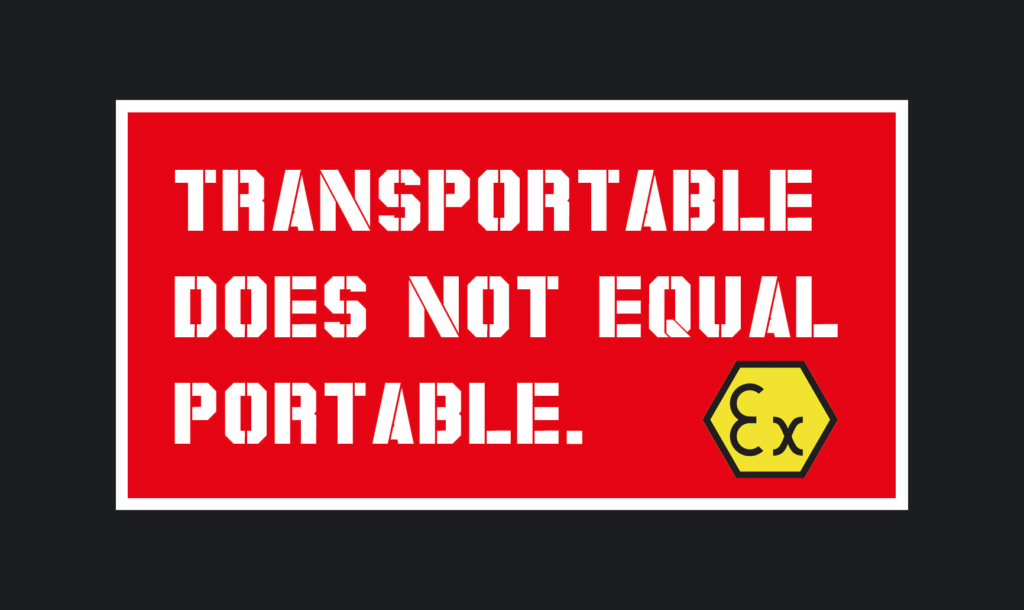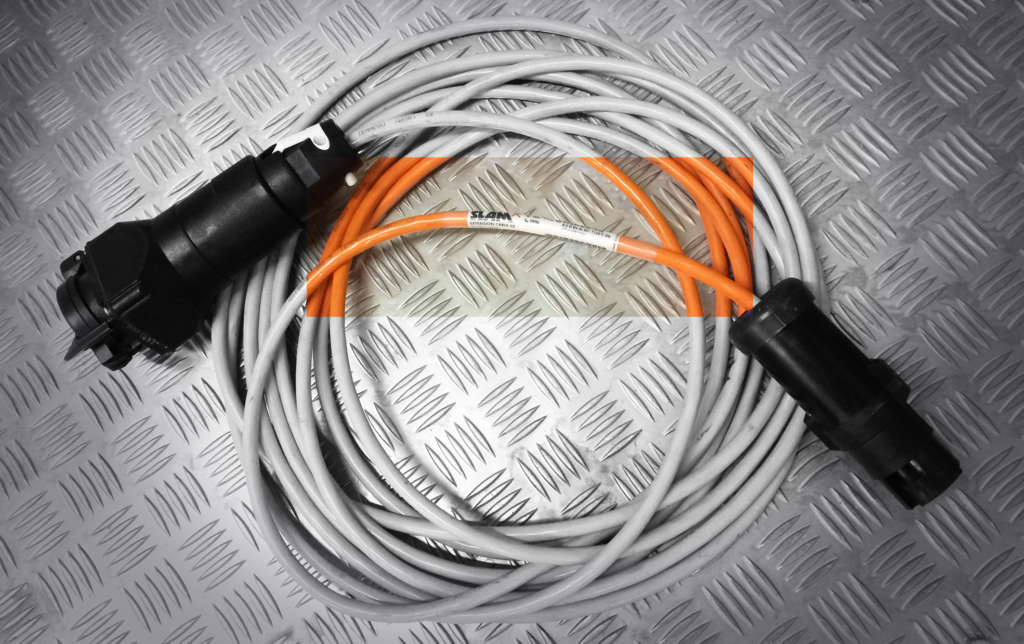Transportable vs. Portable Ex Equipment
By Tuomas Seilo

It’s one of those days again when you have to enter a tank for inspection and maintenance. What type of equipment do you need this time?
It simply depends on how you want to use the equipment.
Whilst carrying out the risk assessment prior to entering a confined space, there are the IEC / EN regulations to take into account. Here it is critical to distinguish between transportable and portable Ex equipment to avoid any hidden risks.
In IEC 60079-14 (section 3.14) transportable equipment is defined as “equipment not intended to be carried by a person nor intended for fixed installation.” In other words, this means when the equipment is energized (plugged in), it should not be moved or carried by any means. And when not energized, the equipment is moved with a vehicle, not by hand.
The same section also defines portable equipment as “equipment intended to be carried by a person.” To explain simply, that means you are free to grab the equipment in your hands while it is energized and move it to another location without any risk. Typically, portable equipment weighs somewhere between 10 and 20 kg.
When Ex-device is certified as portable, it can be moved even while energized
Which is safer to use in turnaround?
The question you may have on our mind is how to distinguish these two types from each other in
practice. You can have a look at the certificate, but unfortunately, certifications are today not as clear as they should be. In many cases, the type of equipment is not clearly explained, leaving room for risky, unnecessary speculations.
Sometimes the ATEX certificate is not even covering the complete system, leaving key components of the equipment certification completely out. This tends to be a very common mishap with Ex-certified extension cables, for example. It is not enough anymore to have just certified Ex plugs and sockets. There should be one ATEX certificate for the complete extension cable – plugs, sockets, cable and all – and defined unambiguously as “portable” as defined by Article 2 of the ATEX directive.
All SLAM® Cables have proper certification marking.

So, back to the original question: transportable or portable? Well, it depends, because the two are most certainly not equal. Whenever you need to perform a risk assessment and select appropriate equipment, please bear this distinction in mind and pay special attention how the intended use of the equipment is specified, as well as the scope of the certification.
If you would like to learn more about the advanced safety features of Atexor products and our other solutions for confined space, please visit our temporary lighting pages or contact me directly. We have many seasoned professionals and an extensive range of high-quality, fully certified equipment, not to mention bespoke solutions, to help you solve your Hazardous Area lighting needs.

